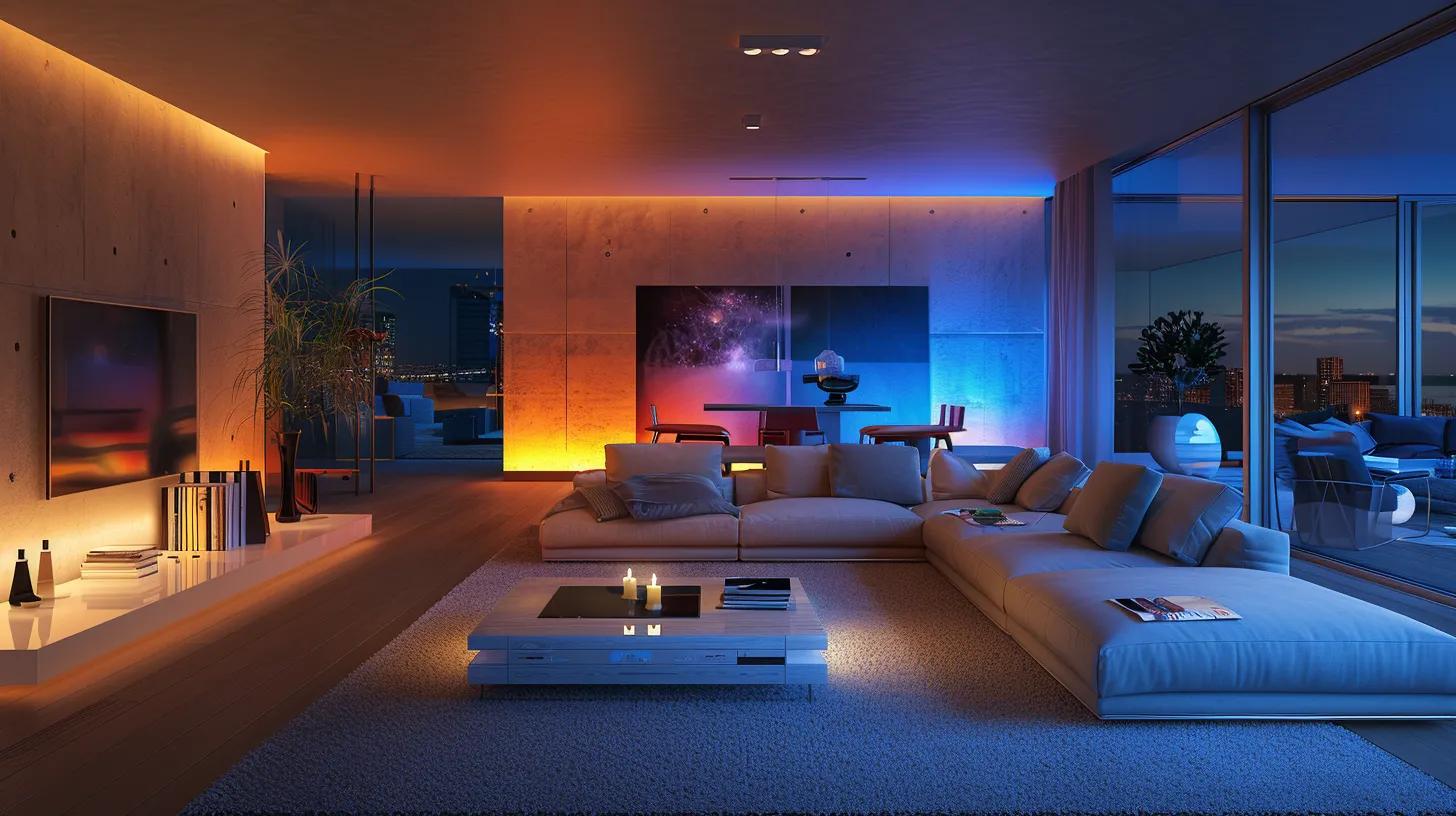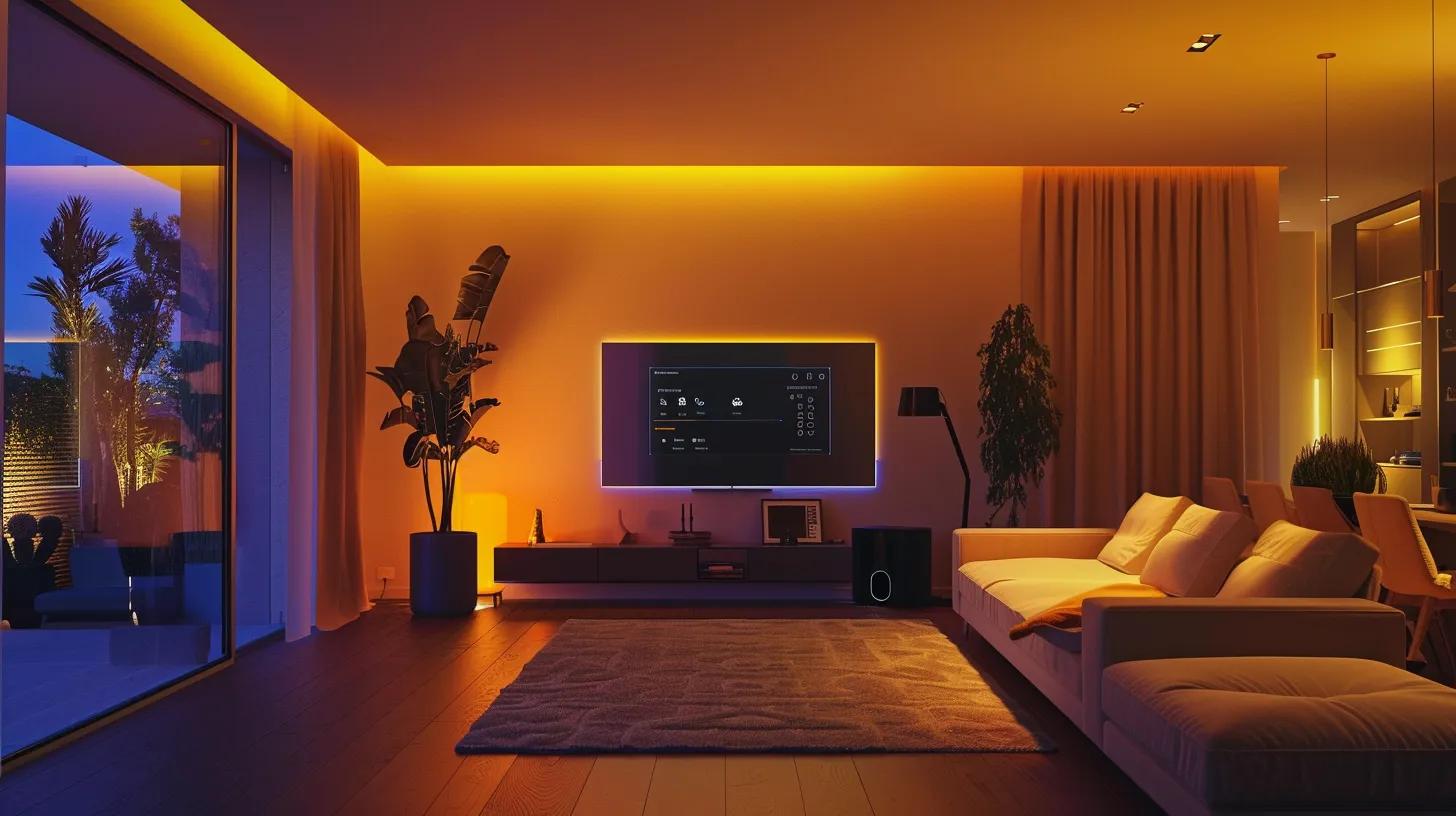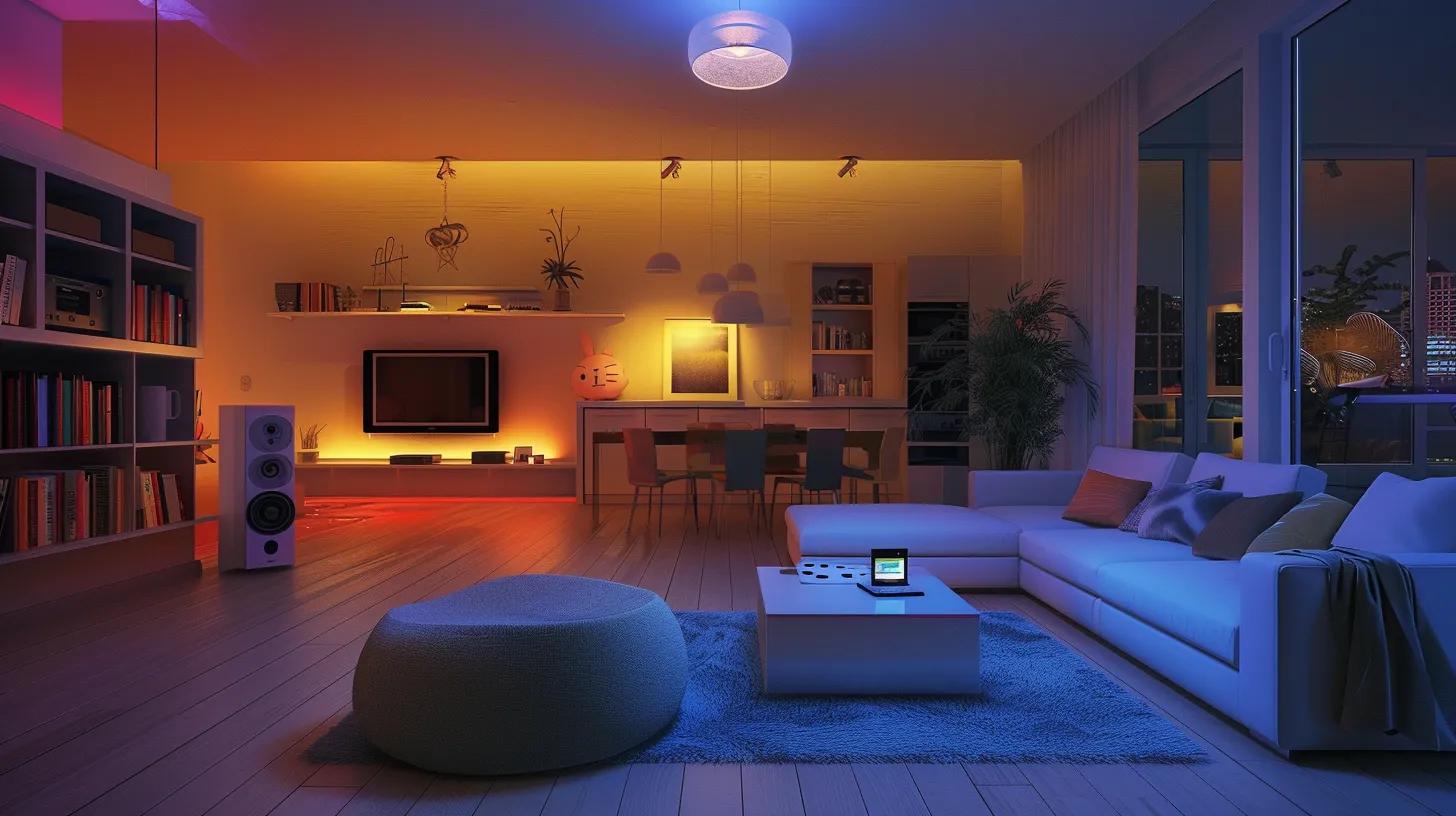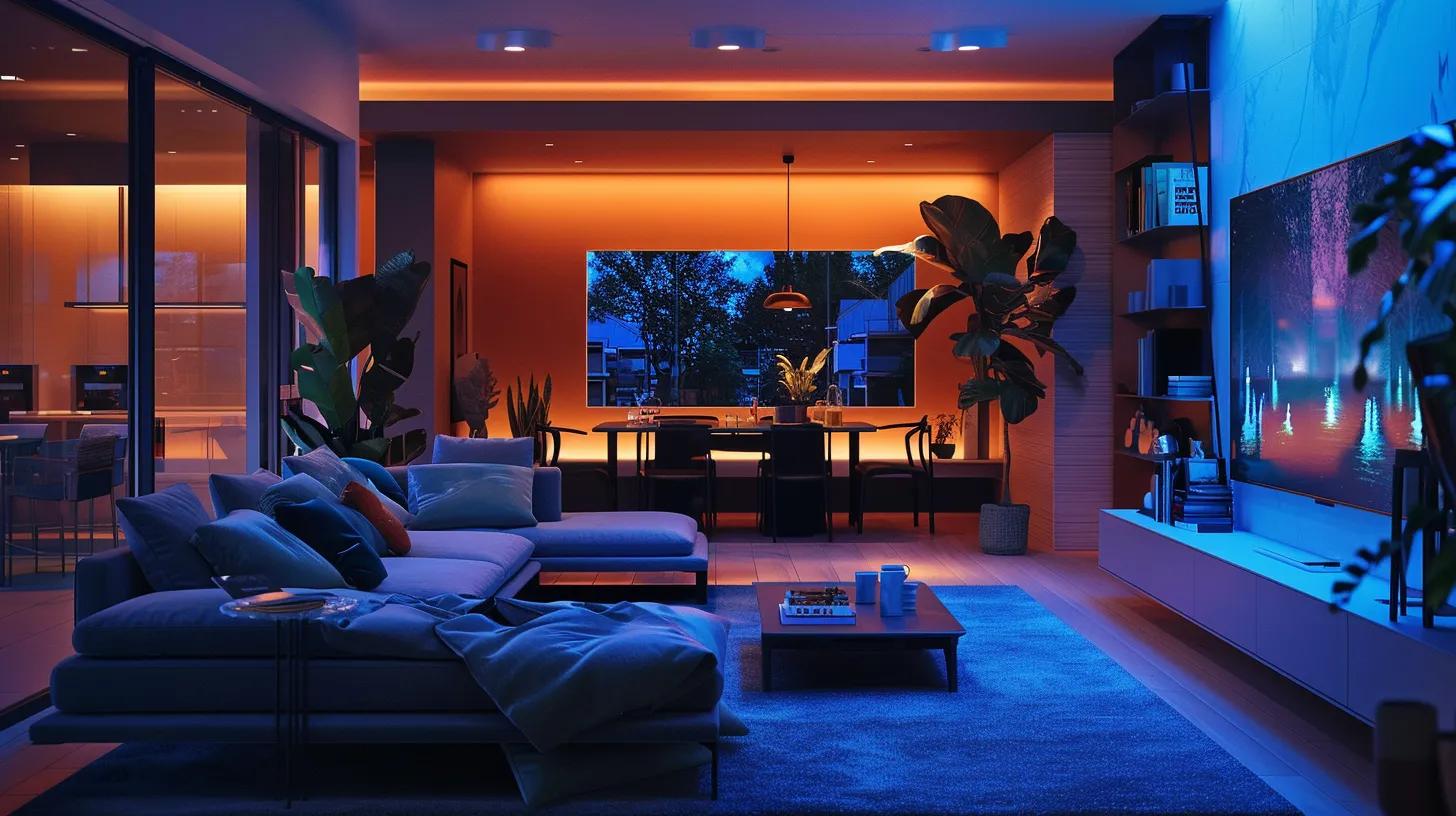Smart Technology Enhancements Tailored for Priority Homes

Smart Technology Enhancements for Modern Priority Homes
Smart technology in modern homes, particularly in regions like home remodel utah county, revolutionizes how homeowners live by integrating systems that improve security, energy management, convenience, and lifestyle quality. Buyers increasingly seek properties equipped with state-of-the-art solutions that ensure safety, efficiency, and comfort. This article highlights key benefits of smart technology and outlines essential features that enhance property value and overall living quality.
Key Takeaways
- Enhances home security with advanced monitoring and automated access.
- Boosts energy efficiency via smart climate control, lighting, and renewable energy integrations.
- Increases convenience with voice control and automation.
- Offers customization and professional installations.
- Promotes sustainable living and long-term financial benefits.
What Are the Key Benefits of Smart Technology in Modern Homes?

Smart technology creates a connected, secure, and efficient home environment. It enhances security with real-time surveillance and automated alerts, improves energy management by adjusting settings based on occupancy, and simplifies daily routines through automation. Devices communicate within the home network, allowing control over lighting, temperature, and more using mobile devices or voice assistants, all while aligning with sustainable practices.
How Does Smart Technology Improve Home Security?
By integrating interconnected devices, smart technology continuously monitors the home. Smart locks, surveillance cameras, and motion-detecting doorbells work together to alert homeowners of unusual activity. High-definition security cameras send notifications directly to mobile devices and integrated access controls reduce risks associated with traditional keys, deterring intrusions and providing peace of mind.
In What Ways Does Smart Technology Enhance Energy Efficiency?
Smart thermostats and lighting systems optimize energy use by automatically adjusting settings based on real-time data. Thermostats regulate heating and cooling according to occupant schedules, while lighting systems use sensors and timers to minimize waste. Integration with renewable energy sources and smart plugs further reduces consumption, resulting in long-term savings and a smaller environmental footprint.
How Does Smart Technology Increase Convenience and Lifestyle Quality?
Smart technology streamlines daily living by automating routine tasks. Homeowners can adjust lighting, temperature, and appliances with a few voice commands or taps on a smartphone. Hubs like Amazon Echo or Google Nest allow control of multiple devices simultaneously, while personalized settings ensure an environment that adapts to individual needs, leading to a more comfortable and efficient lifestyle.
Which Smart Home Technologies Are Essential for Priority Homes?
Priority homes require smart technology that blends functionality with elegance. Key systems include comprehensive automation setups, advanced lighting solutions, efficient climate control, and integrated home entertainment. These technologies work in harmony, enhancing market value and offering tailored solutions that meet specific lifestyle and security needs.
What Features Define Smart Home Automation Systems?
Smart home automation centralizes control through one interface. Essential features include device interconnectivity, real-time monitoring, and programmable scenarios—for example, automatically dimming lights and adjusting the thermostat at a specified time. Many systems provide mobile apps for remote control and integrate with voice assistants, ensuring ease of operation whether at home or away.
How Do Smart Lighting Solutions Benefit Modern Homes?
Smart lighting adjusts brightness and color temperature to match the time of day or user preference, contributing to better sleep and mood. Automated sensors and timers turn lights off when not needed. Additionally, customizable lighting scenes create ambiance while reducing energy waste, making homes both stylish and energy efficient.
What Are the Advantages of Smart Climate Control Systems?
Smart climate control systems adapt heating and cooling based on occupancy and weather. Features such as geofencing allow the thermostat to adjust temperatures as residents arrive or leave. This precision ensures comfort, lowers energy bills, and reduces the home’s environmental footprint while providing real-time monitoring to help optimize energy use.
How Does Smart Home Entertainment Integrate With Other Technologies?
Smart home entertainment systems connect various media devices like smart TVs and wireless speakers through central hubs. This allows users to stream content across multiple rooms with synchronized audio and visual settings. Integration with lighting and climate control further enhances the media experience, creating an immersive environment that adapts to user preferences.
How Can Voice Control Integration Transform Smart Homes?

Voice control enables a hands-free, intuitive way to manage smart devices. Homeowners can adjust lighting, temperature, and security systems through simple commands. Systems like Amazon Alexa and Google Assistant process natural language inputs, learning user preferences over time. This hands-free approach increases convenience and accessibility, especially for those with mobility challenges or busy schedules.
What Are the Benefits of Voice Control in Smart Homes?
Voice control improves accessibility and efficiency because users can operate devices without manual intervention. It facilitates multitasking and quick response in emergencies, such as summoning help or securing the home. Continuous learning from voice interactions ensures that the system becomes more responsive and personalized over time, enhancing the overall smart home experience.
How Is Voice Control Integrated With Smart Home Devices?
Voice control works through centralized hubs and dedicated applications that connect devices via Wi-Fi, Bluetooth, or protocols like Zigbee and Z-Wave. A voice assistant, whether Amazon Alexa, Google Assistant, or Apple Siri, processes commands such as “turn off the living room lights” and relays them to the appropriate devices. This integration simplifies management and maintains a cohesive ecosystem.
What Are the Best Practices for Setting Up Voice Control Systems?
For optimal performance, voice assistants should be positioned in high-traffic areas. Securing the home network with strong passwords and encryption is critical to prevent breaches. Customizing language, accent, and routine settings, along with regular software updates, ensures compatibility and efficient performance. Educating all household members on proper usage further enhances system effectiveness.
How Do Smart Security Systems Protect Modern Priority Homes?
Smart security systems integrate cameras, sensors, alarms, and smart locks into a centralized framework that homeowners can monitor remotely. They use features such as facial recognition and motion detection to identify potential threats and send instant notifications to mobile devices. This integrated approach enables rapid emergency response and continuous protection.
What Features Make Smart Locks Effective for Home Security?
Smart locks feature keyless entry, remote access, and real-time monitoring of entry logs. They can issue temporary codes for guests and maintain audit trails for all access events. Integrated with other security devices like cameras and alarms, they provide coordinated protection and significantly enhance overall home security.
How Do Smart Surveillance Cameras Enhance Property Protection?
High-resolution surveillance cameras with night vision and two-way audio offer real-time monitoring. They use advanced algorithms to detect unusual movements and differentiate between humans and animals. Instant alerts to mobile devices allow homeowners to react swiftly, while the option for cloud storage ensures that critical footage is securely saved for later review.
What Are the Benefits of Remote Monitoring and Alerts?
Remote monitoring enables homeowners to view live feeds and receive alerts of suspicious activities. When sensors are triggered, immediate notifications prompt users to check camera feeds, facilitating swift intervention—whether by contacting authorities or activating additional deterrents. This capability reinforces safety and enhances overall security system effectiveness.
What Are the Installation and Customization Options for Smart Home Technologies?

Installation and customization options allow smart home systems to be tailored to individual property needs. Professional installation integrates these systems seamlessly into the home’s infrastructure, while customization options let users choose devices that match their aesthetic and functional requirements. Personalized software settings enable the creation of routines that automate tasks and optimize system performance.
How Is a Smart Home Automation System Professionally Installed?
A professional installation begins with a consultation and site assessment. Technicians evaluate the home’s layout to determine ideal sensor and hub placement, configure wireless networks, and connect devices to a central system. After wiring and setup, the system is calibrated to ensure all components work together efficiently for secure and seamless operation.
How Can Smart Technology Solutions Be Customized for Individual Homes?
Customization starts with assessing the homeowner’s needs and style. Installers help select devices—from lighting and thermostats to security protocols—that complement the home’s design while meeting functional goals. Mobile apps provided with many systems allow users to adjust settings in real time, ensuring the technology adapts as needs change over time.
What Support and Maintenance Services Are Available for Smart Homes?
Many providers offer maintenance packages that include regular software updates, troubleshooting, and hardware checks. Customer support, available 24/7 via phone or online chat, ensures issues are addressed promptly. Remote diagnostic services can also quickly resolve system problems, ensuring continuous, reliable operation.
How Does Smart Technology Contribute to Sustainable and Cost-Effective Living?
Smart technology regulates energy consumption and reduces waste, leading to both environmental and financial benefits. Systems like smart thermostats and lighting platforms adjust settings automatically, lowering utility bills and decreasing the home’s carbon footprint. The long-term savings often outweigh the initial investment, making these systems both sustainable and cost-effective.
What Role Do Smart Thermostats Play in Reducing Energy Consumption?
Smart thermostats learn user schedules to adjust heating and cooling efficiently, using weather integration for optimal performance. By ensuring energy is used only when necessary, they can reduce energy consumption significantly—providing savings on utility bills and a measurable return on investment.
How Does Smart Lighting Lower Utility Bills?
Smart lighting employs sensors and timers to operate only when needed, and adjustable bulbs let users customize brightness and energy use. This automation minimizes waste, reduces electricity bills, and extends the lifespan of lighting fixtures, contributing both to economic savings and environmental sustainability.
What Are the Long-Term Financial Benefits of Smart Home Technology?
Investing in smart technology can lower monthly utility bills and increase property value. Enhanced security and convenience, along with automated maintenance alerts, help prevent costly repairs. The overall effect is a system that remains cost-effective over time while boosting the home’s market appeal.
What Are Common Questions About Smart Technology in Modern Homes?

Common inquiries address integration, cost, and usability. Homeowners want to know how smart systems work with existing infrastructure, the balance between initial cost and long-term savings, and how user-friendly the technology is for everyday tasks.
What Is a Smart Home and How Does It Work?
A smart home features interconnected devices that automate security, lighting, climate, and entertainment functions. These devices use wireless networks for remote control via smartphones or voice commands, creating an efficient, seamlessly managed living space.
How Much Does a Smart Home System Cost?
Costs vary widely depending on system complexity. Entry-level installations can start from a few hundred dollars, while comprehensive systems may require a larger investment. The energy savings and increased property value generally justify the expense.
What Are the Most Popular Smart Home Devices?
Popular devices include smart thermostats, security cameras, smart locks, voice-controlled speakers, and lighting systems. Many homeowners also choose smart hubs to centralize control of various devices, enhancing overall functionality.
How Do I Start Creating a Smart Home?
Begin by assessing your needs and researching compatible devices that suit your security, energy efficiency, and convenience goals. Starting with a basic system—such as smart lighting or a thermostat—and gradually expanding can simplify the transition to a fully integrated smart home.
Frequently Asked Questions
Q: What is the main advantage of integrating smart technology in modern homes? A: It enhances security, energy efficiency, and convenience through automation and remote management.
Q: Can smart home technology really lower utility bills? A: Yes, smart thermostats and lighting systems optimize energy use, significantly reducing energy consumption and utility expenses.
Q: How does voice control improve the usability of smart homes? A: Voice control enables hands-free operation of devices, making it easier to manage tasks and improve accessibility.
Q: Are smart security systems reliable in preventing intrusions? A: Absolutely, they offer real-time monitoring, automated alerts, and remote access to deter and respond quickly to threats.
Q: What should homeowners consider when customizing a smart home system? A: Consider unique needs, aesthetic preferences, budget constraints, and desired features to ensure seamless integration with lifestyle.
Final Thoughts
Smart technology reshapes modern homes by delivering enhanced security, energy efficiency, and convenience. Integrated systems not only offer immediate benefits but also provide long-term value through lower utility costs and increased property appeal. As these technologies evolve, their role in sustainable and cost-effective living will continue to grow, making them essential for today’s homebuyers. Embracing smart innovations leads to a more secure, efficient, and enjoyable home environment.